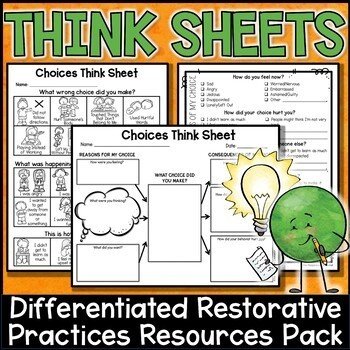Restorative practices are sweeping the education world and for very good reason. This approach to discipline focuses on repairing/restoring the hurt that has happened - instead of on punishing the wrong doing. I'm lucky to have worked in a school district that was an early adopter of some of these ideas. That doesn't mean that all faculty across the city immediately jumped on board, but it does mean that we had the opportunity to receive training on it early on. So what is the connection between school counselors and restorative practices?
While administration and classroom teachers play the most crucial and day-to-day role in restorative practices, school counselors are key in its implementation as well. The fact is that restorative practices are incredibly well aligned to our beliefs and philosophies as counselors. This is second nature to us! Our role then is more in making our work and practices more intentional. And in being more intentional with our modeling of these practices so that teachers are encouraged to put them into place as well.
Restorative Questioning and Think Sheets
One of the most direct ways that I promote restorative practices in my building is through teacher training. A specific piece of this is using restorative questioning when misbehavior has occurred. Sometimes I also provide teachers with the questions on little lanyard cards and on little posters for their rooms.
I also provide each teacher with several copies of "think sheets" (and leave some in the work room, too). These certainly don't take the place of having a conversation with a student when something has occurred but they are amazing for 1) when a teacher can't have a conversation with a student right away but the student needs to start thinking about it right away or 2) the student does better processing on their own first.
Some students are defensive if you jump into a restorative conference. Answering the questions on paper first helps them be more comfortable. Two hints for using these think sheets successful: 1) you've got to explicitly teach the students how to complete them (I use a PPT for this) and 2) students need to know how to regulate their emotions before they can complete them.
The Goal of Discipline
It is easy for educators to forget about the true meaning and goal of discipline: to teach! Sometimes the counselor's role in restorative practices is helping to remind teachers of this fact. This can come through PDs/presentations we give to teachers. Sometimes it's through modeling. As much as we like to think we never should be involved with handling misbehavior, it happens (in the hallway, in lessons, etc.). We are in a great position to show teachers how to handle it in a restorative way.
The three pieces of this I find to be most impactful are 1) approaching the "victim" first to check on them (as opposed to going to the "aggressor" first), 2) speaking with the student about how their actions impacted others, and 3) encouraging "re-dos", and teaching the specific positive behavior first if needed.
The Power of Circles and Connection
There is power in grouping together in a circle. The entire vibe changes when everyone is sitting communally like this as opposed to in rows or clumped together. It puts everyone on equal power footing. It promotes connection through increased face to face contact. As counselors, we can model this both through the use of circles during class lessons, but also during faculty meetings and PDs.
I-Messages
I truly believe that I-messages can save the world (and so can teaching your students effective conflict resolution skills). Assertively sharing one's emotions and needs is a proactive way to establish community, reduce feelings of disrespect, increase peaceful problem solving, improve emotional self-awareness....the list goes on.
In restorative practices realms, these are referred to as "affective statements." Adults in school buildings are encouraged to use them with students just as much as we encourage our students to use them with one another. My role in I-messages is in explicitly teaching them to ALL students through the school counseling core curriculum. I've written more about how I do that here.
Where is your school at in the process of adopting restorative practices? This post talks a little more about gaining faculty investment and training them in best practices!







